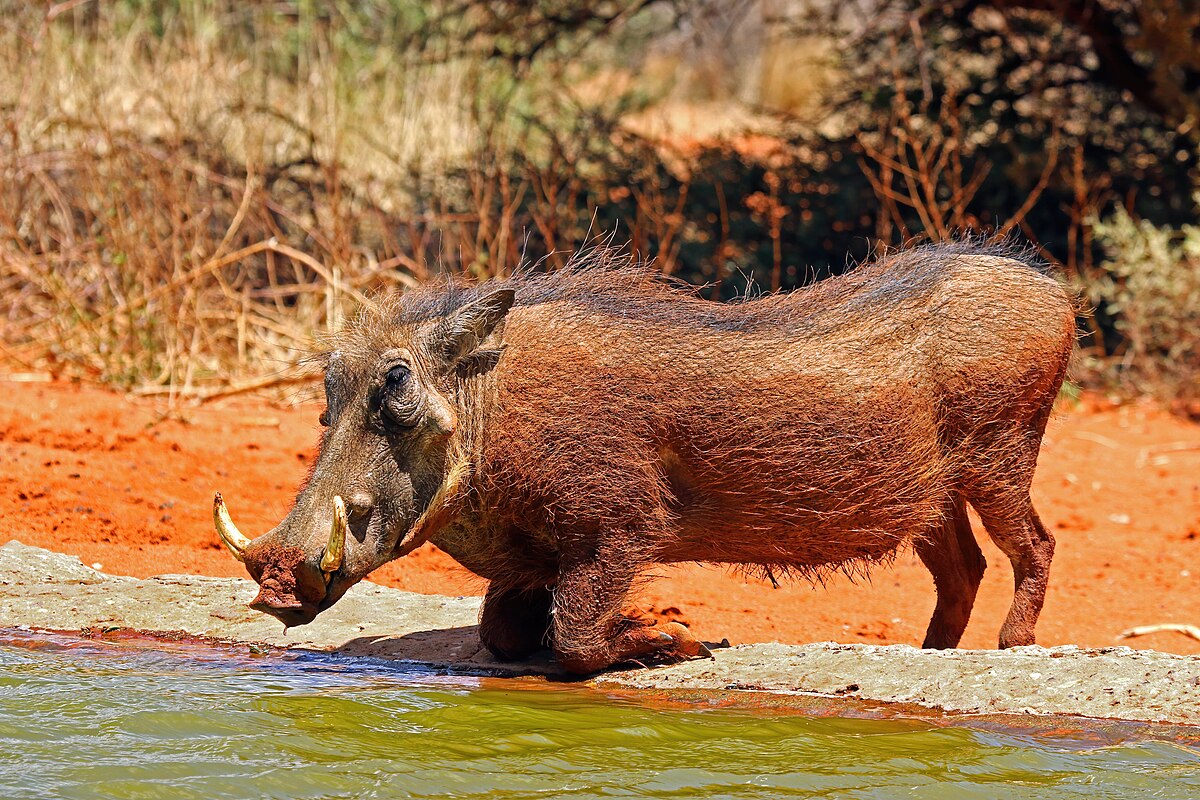Post by dinosauria101 on May 6, 2019 1:23:11 GMT 5
Spotted Hyena - Crocuta crocuta
Shoulder height: 70-91 cm (28-36 in)
Body length: 95-166 cm (38-65 in)
Weight: 40.5-81.7 kg (89-180 lb)
General information: The spotted hyena is a species of hyena native to Sub-Saharan Africa. It is the largest member of the Hyaenidae, and is the most social of the Carnivora in that it has the largest group sizes and most complex social behaviours. Its social organisation is unlike that of any other Carnivore, bearing closer resemblance to that of cercopithecine primates (baboons and macaques) with respect to group-size, hierarchical structure, and frequency of social interaction among both kin and unrelated group-mates. Spotted hyena society is matriarchal; females are larger than males, and dominate them. The spotted hyena is a highly successful animal, being the most common large carnivore in Africa. Its success is due in part to its adaptability and opportunism; it is both an efficient hunter and a scavenger, with the capacity to eat and digest skin, bone and other animal waste.

Common Warthog - Phacochoerus africanus
Common warthogs are found in open and wooded savannas, grass-steppes, and semi-deserts in Africa. Common warthogs prefer open areas and avoid rainforest and severe desert. They are found on Kilimanjaro up to an elevation of 3000 m and along coastal regions of Africa. Common warthogs often utlilize formerly wooded areas that have been cleared for pastures. Common warthogs weigh 50 to 150 kg with females being 15 to 20 percent lighter than males. Head and body length is 900 to 1500 mm. Shoulder height ranges from 635 to 850 mm. Common warthogs have large upper tusks that are 255 to 635 mm long in males and 152 to 255 mm long in females. As their name suggests, warthogs have three pairs of facial warts, comprised of cartilaginous connective tissue. The three types of warts are: 1) the suborbital warts, which may grow as long as 15 cm in males; 2) the preorbital warts, which do not develop as much in females; and 3) the submaxillary warts, which have white bristles.
Mass : 50 to 150 kg (110 to 330 lbs)
Length : 900 to 1500 mm (35.43 to 59.06 in)

Credit to Wikipedia
Shoulder height: 70-91 cm (28-36 in)
Body length: 95-166 cm (38-65 in)
Weight: 40.5-81.7 kg (89-180 lb)
General information: The spotted hyena is a species of hyena native to Sub-Saharan Africa. It is the largest member of the Hyaenidae, and is the most social of the Carnivora in that it has the largest group sizes and most complex social behaviours. Its social organisation is unlike that of any other Carnivore, bearing closer resemblance to that of cercopithecine primates (baboons and macaques) with respect to group-size, hierarchical structure, and frequency of social interaction among both kin and unrelated group-mates. Spotted hyena society is matriarchal; females are larger than males, and dominate them. The spotted hyena is a highly successful animal, being the most common large carnivore in Africa. Its success is due in part to its adaptability and opportunism; it is both an efficient hunter and a scavenger, with the capacity to eat and digest skin, bone and other animal waste.
Common Warthog - Phacochoerus africanus
Common warthogs are found in open and wooded savannas, grass-steppes, and semi-deserts in Africa. Common warthogs prefer open areas and avoid rainforest and severe desert. They are found on Kilimanjaro up to an elevation of 3000 m and along coastal regions of Africa. Common warthogs often utlilize formerly wooded areas that have been cleared for pastures. Common warthogs weigh 50 to 150 kg with females being 15 to 20 percent lighter than males. Head and body length is 900 to 1500 mm. Shoulder height ranges from 635 to 850 mm. Common warthogs have large upper tusks that are 255 to 635 mm long in males and 152 to 255 mm long in females. As their name suggests, warthogs have three pairs of facial warts, comprised of cartilaginous connective tissue. The three types of warts are: 1) the suborbital warts, which may grow as long as 15 cm in males; 2) the preorbital warts, which do not develop as much in females; and 3) the submaxillary warts, which have white bristles.
Mass : 50 to 150 kg (110 to 330 lbs)
Length : 900 to 1500 mm (35.43 to 59.06 in)

Credit to Wikipedia


